

The Tragedy of Dr Faustus. SparkNotes: Doctor Faustus. A personal view by salesman5, September 13, 2013 I think we should not blame this ambitious man because everyone has a " Faustasian Approach " to some extent. some succeed to restrain their inner wishes while other, like Fuastus , do not .
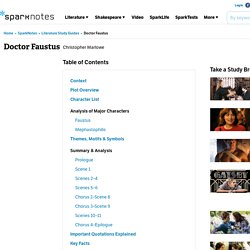
Discuss the character of Doctor Faustus. by touhidsm, May 24, 2014. TED-Ed - How English has evolved through several... A Hero's Journey. Copy of Hero's Journey: Sir Gawain and the Green Knight by Jason West on Prezi. 12 steps of a Hero's Journey by michael dowell on Prezi. The 12 Stages of the Hero's Journey by kyle thompson on Prezi. The Hero's Journey in Beowulf by Morgan M on Prezi. The Hero's Journey of Beowulf by Maddie Fredrick on Prezi.
Beowulf- Hero's Journey by Ashley Deaner on Prezi. Beowulf - Hero's Journey Storyboard by rebeccaray. The Second Shepherds' Play Characters - eNotes.com. Coll Coll, the first shepherd.
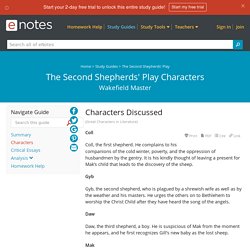
The Second Shepherds' Play - Dictionary definition of The Second Shepherds' Play. ANONYMOUSc. 1450 The Second Shepherds' Play is part of the Wakefield mystery play cycle.
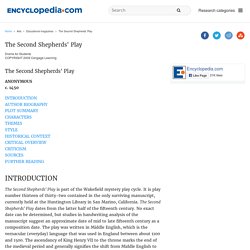
It is play number thirteen of thirty-two contained in the only surviving manuscript, currently held at the Huntington Library in San Marino, California. The Second Shepherds' Play dates from the latter half of the fifteenth century. No exact date can be determined, but studies in handwriting analysis of the manuscript suggest an approximate date of mid to late fifteenth century as a composition date. The Second Shepherds' Play Places Discussed - eNotes.com.
*Yorkshire *Yorkshire.

Northern England moors on which shepherds are watching over their flocks by night. In contrast with biblical shepherds, however, these shepherds complain about typical problems of the fifteenth century rural poor. The shepherds are dispossessed tenant farmers who suffer from the bone-chilling Yorkshire winter, from hunger, and from oppressive landowners. They represent the poor, meek, and downtrodden for whom Jesus is a symbol of hope and social justice, even across the centuries. The Second Shepherds' Play Summary - eNotes.com. On the night of Christ’s birth, a cold and lonely shepherd stands in the countryside near Bethlehem watching his flocks and bemoaning his lot in life.
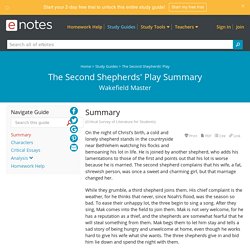
He is joined by another shepherd, who adds his lamentations to those of the first and points out that his lot is worse because he is married. The second shepherd complains that his wife, a fat, shrewish person, was once a sweet and charming girl, but that marriage changed her. While they grumble, a third shepherd joins them. Faust. Faust is a learned German scholar who, at the beginning of the poem, is disillusioned and demoralized by his inability to discover life's true meaning.

Despite his worldly accomplishments he is assailed by frustration because the traditional and conventional modes of thought that he has mastered cannot help him to discern a coherent purpose or form behind all the numerous and varied phenomena of life and nature. About Faust, Parts 1 and 2. Introduction Faust, Goethe's great dramatic poem in two parts, is his crowning work.

Even though it is based on the medieval legend of a man who sold his soul to the devil, it actually treats modern man's sense of alienation and his need to come to terms with the world in which he lives. This theme has always been an important one in western literature, but it has gained in urgency during our own century. Each generation must explore anew the problems of human estrangement and fulfillment — the best way to begin such a search is to see what the past has to offer. SparkNotes: Doctor Faustus. The Hero's Journey. SparkNotes No Fear Literature: The Canterbury Tales: The Pilgrims The NarratorA character called Geoffrey Chaucer.
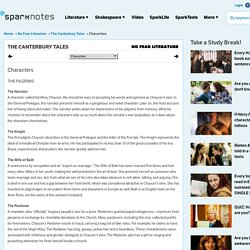
We should be wary of accepting his words and opinions as Chaucer’s own. The Second Shepherds' Play - Wikipedia. Everyman: Morality Play Characters. Everyman: Morality Play Summary. A prologue, read by the Messenger asks the audience to give their attention and announces the purpose of the play, which will show us our lives as well as our deaths (“our ending”) and how we humans are always (“all day”) transitory: changing from one state into another.
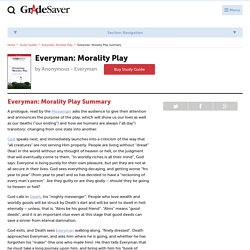
God speaks next, and immediately launches into a criticism of the way that “all creatures” are not serving Him properly. People are living without “dread” (fear) in the world without any thought of heaven or hell, or the judgment that will eventually come to them. “In worldly riches is all their mind”, God says. Everyone is living purely for their own pleasure, but yet they are not at all secure in their lives. God sees everything decaying, and getting worse “fro year to year” (from year to year) and so has decided to have a “reckoning of every man’s person”. God calls in Death, his “mighty messenger”. God exits, and Death sees Everyman walking along, “finely dressed”. The Hero Packet. Joseph Campbell and the Hero’s Journey – Notes in the Margin Weblog. Have you noticed how similar are the stories of Luke Skywalker, Frodo Baggins, and Harry Potter?

All three of these ordinary fellows set out on a long journey, fraught with danger, to undertake a task with a little help from their friends. Hero's journey. "A Practical Guide to Joseph Cambell’s The Hero with a Thousand Faces" by Christopher Vogler © 1985 “There are only two or three human stories, and they go on repeating themselves as fiercely as if they had never happened before.” In the long run, one of the most influential books of the 20th century may turn out to be Joseph Campbell’s THE HERO WITH A THOUSAND FACES.
The book and the ideas in it are having a major impact on writing and story-telling, but above all on movie-making. Filmmakers like John Boorman, George Miller, Steven Spielberg, George Lucas, and Francis Coppola owe their successes in part to the ageless patterns that Joseph Campbell identifies in the book. The ideas Campbell presents in this and other books are an excellent set of analytical tools. With them you can almost always determine what’s wrong with a story that’s floundering; and you can find a better solution almost any story problem by examining the pattern laid out in the book.
The Hero's Journey notes. Women in bewolf. Beowulf Structure. "Why did he make Scyld the child in the boat? . . . A mood in which the symbolism (what we should call the ritual) of a departure over the sea whose further shore was unknown; and an actual belief in a magical land or otherworld located 'over the sea', can hardly be distinguished--and for neither of these elements or motives is conscious symbolism, or real belief, a true description. It was murnende mod filled with doubt and darkness.
" BeowulfHistory. Brepolsonline. The Canterbury Tales. The Knight rides at the front of the procession described in the General Prologue, and his story is the first in the sequence. The Host clearly admires the Knight, as does the narrator. The narrator seems to remember four main qualities of the Knight. The first is the Knight’s love of ideals—“chivalrie” (prowess), “trouthe” (fidelity), “honour” (reputation), “fredom” (generosity), and “curteisie” (refinement) (General Prologue, 45–46). The Canterbury Tales: The Pardoner’s Introduction, Prologue, and Tale. Fragment 6, lines 287–968. The Canterbury Tales. The Canterbury Tales: Important Quotations Explained.
Whan that Aprill with his shoures soote The droghte of March hath perced to the roote, And bathed every veyne in swich licour Of which vertu engendred is the flour; Whan Zephirus eek with his sweete breeth Inspired hath in every holt and heeth The tendre croppes, and the yonge sonne Hath in the Ram his halve cours yronne, And smale fowles maken melodye, That slepen al the nyght with open ye (So priketh hem nature in hir corages), Thanne longen folk to goon on pilgrimages. (General Prologue, 1–12) The Canterbury Tales: Character List.
The Canterbury Tales: General Prologue: Introduction. Fragment 1, lines 1–42 Summary. The Structure of Sir Gawain and the Green Knight.